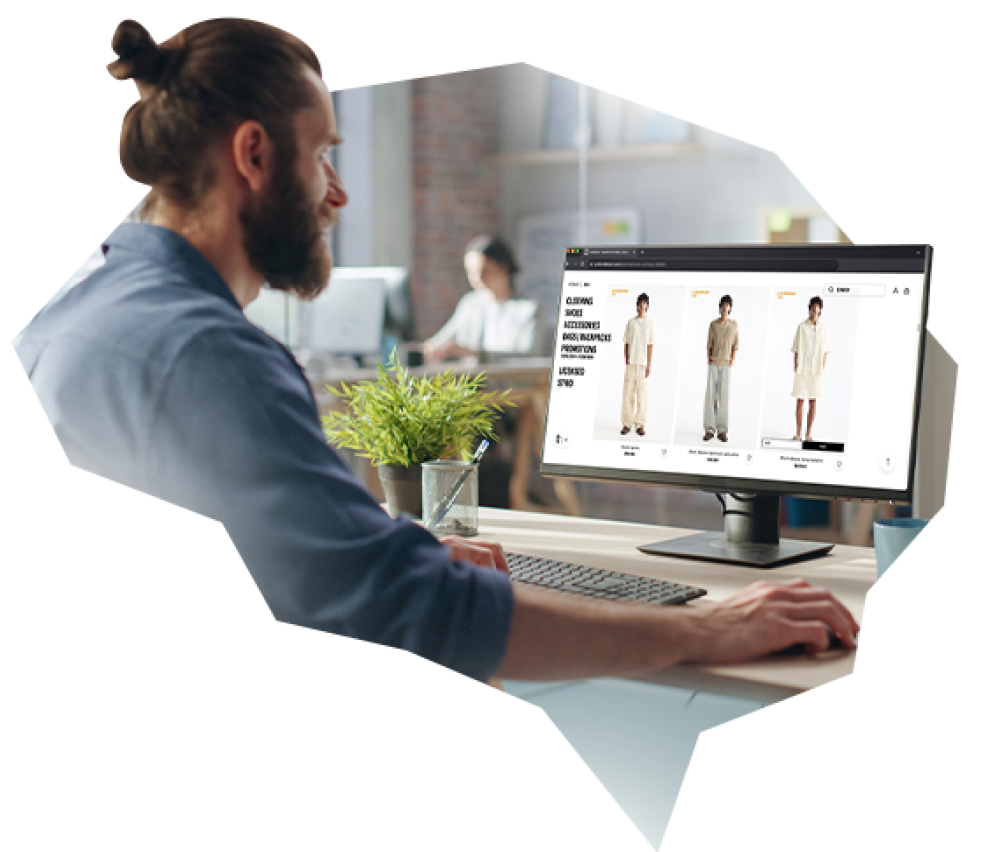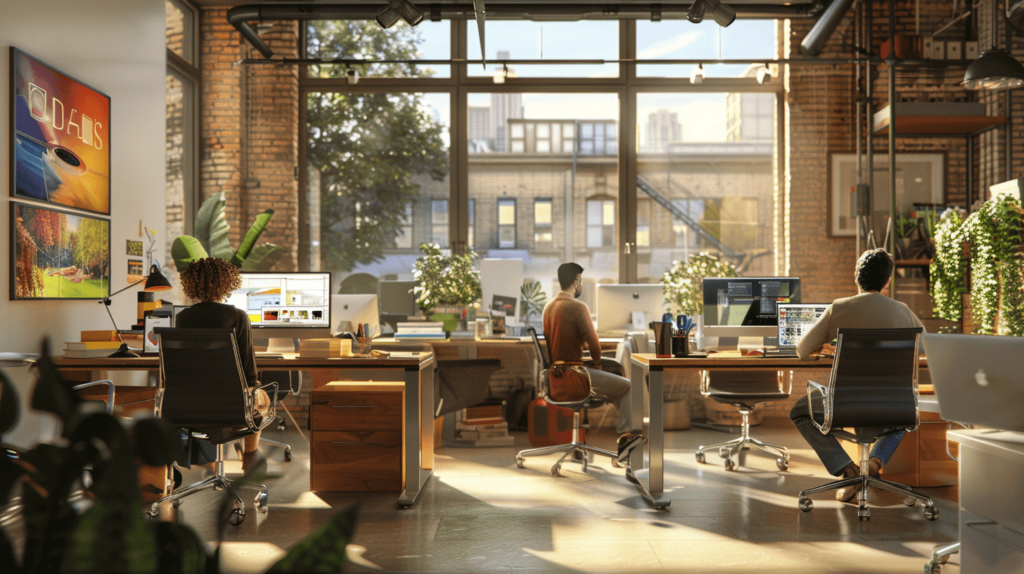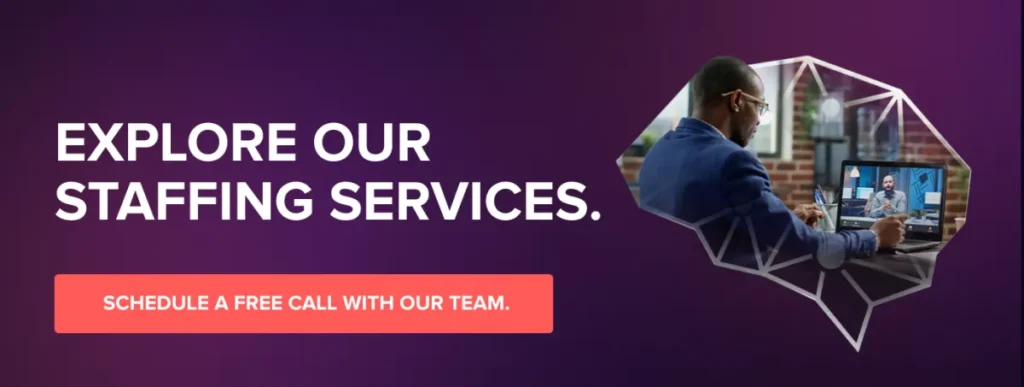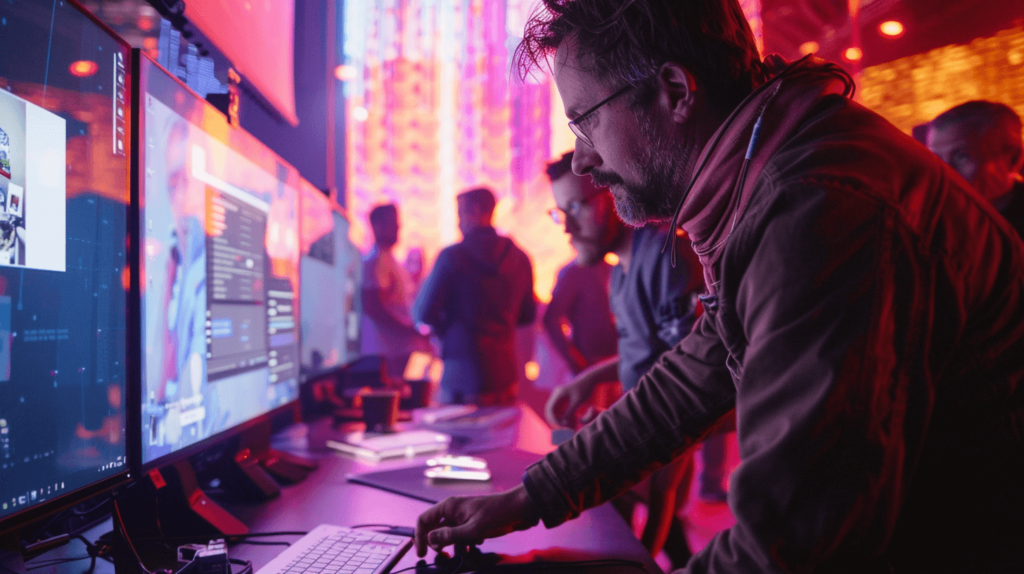Introduction

In today’s digital age, the role of a digital designer has become pivotal in shaping the visual and interactive landscapes of various industries. As you navigate websites, apps, and digital media, it’s the work of digital designers that makes the experience intuitive, engaging, and aesthetically pleasing. Their creative and technical expertise is crucial in translating complex information into accessible and attractive digital formats, impacting everything from user experience to brand perception.
If your goal is to craft an impeccable job description for a digital designer, look no further. We’re offering direct access to our premier job description template, a tool that encapsulates the fundamental principles and top practices of C9Staff’s renowned hiring methodology. This document provides a robust foundation for you to customize and refine your hiring specifications, ensuring you attract and select the finest candidates for your needs. Download our complimentary Digital Designer Job Description template today and set the standard for excellence in your recruitment efforts.
Digital Designer Job Description Template

This guide is crafted for you—whether you’re an employer drafting the perfect job description or a job seeker eager to decode and respond to these listings. Each of you plays a vital role in the digital design hiring process, and this guide offers a unique lens for both. For employers, it’s about attracting the right talent with precise, compelling job descriptions. For job seekers, it’s about understanding these descriptions to gauge fit and opportunity.
Our objective is clear: to provide a definitive, dual-perspective guide that not only enriches your understanding but also enhances the effectiveness of recruiting or securing a digital design position. As you delve into the following sections, you’ll gain insights into what makes a digital designer’s role essential, what employers look for when they hire, and how you, as a job seeker, can align your skills with industry expectations.
So, let us board on this exploration together and unlock the full potential of digital design in your professional endeavors. Whether you’re writing a job description or responding to one, the insights you’ll gain here are designed to ensure success in the dynamic and ever-evolving field of digital design.
Understanding the Role of a Digital Designer

Diving into the world of digital design, you might wonder what exactly a digital designer does. At its core, the role of a digital designer involves shaping the digital interfaces that we interact with every day, from websites and mobile apps to multimedia presentations and beyond. The breadth of their responsibilities is vast, encompassing everything from initial concept development to the final implementation of visually appealing and user-friendly designs.
As a digital designer, you are not confined to a single industry. Your skills are crucial across various sectors. Whether it’s a tech startup looking to innovate, an advertising agency aiming to captivate, or an in-house team at a large corporation striving to maintain its competitive edge, digital designers play a pivotal role. In tech startups, your creativity fuels groundbreaking products. In advertising agencies, your designs capture the essence of marketing campaigns that resonate with diverse audiences. And in large corporations, your ability to blend aesthetics with functionality improves the user experience and supports business objectives.
Now, consider the key skills and attributes that are universally expected of digital designers. Creativity is at the forefront—without it, designs lack innovation and fail to draw interest. Technical proficiency, especially in design software like Adobe Creative Suite and Sketch, is non-negotiable, as these tools are fundamental to bringing your creative visions to life. Problem-solving is another critical skill; you often need to find the best ways to convey information visually and ensure it is accessible to all users, regardless of their background or disabilities.
Throughout your career as a digital designer or as an employer looking for the ideal candidate, understanding these aspects helps you appreciate the depth of the role and its impact on the digital world. By stepping into the shoes of a digital designer, you gain insights into a career path that is not only creative and demanding but also immensely rewarding and influential.
Crafting the Perfect Digital Designer Job Description

When you board on crafting the perfect job description for a digital designer, it’s crucial to start by identifying the essential components that every effective job listing should include. Here’s a breakdown of these elements:
Job Title: This should be precise and reflective of the role’s responsibilities and level of seniority.
Key Responsibilities: Clearly outline what the digital designer will be expected to accomplish daily. Be specific to avoid ambiguity.
Required Qualifications: Include both educational and professional qualifications necessary for the role.
Necessary Skills: Detail the technical and soft skills required. For a digital designer, this might include proficiency in Adobe Creative Suite, UX/UI design skills, and strong communication abilities.
Company Overview: Provide a brief yet comprehensive description of your company, emphasizing its mission, values, and the work environment.
Importance of Each Component:
Job Title sets the tone and filters irrelevant applications.
Key Responsibilities help candidates assess their fit and readiness for the role.
Qualifications ensure you attract candidates who meet the educational and professional thresholds.
Skills differentiate between ‘must-have’ and ‘nice-to-have,’ guiding applicants in understanding the role’s demands.
Company Overview sells your workplace to potential applicants and highlights unique selling propositions.
Emphasizing Company Culture: To make your organization stand out, integrate elements of your company culture into the job description. Highlight flexible working conditions, growth opportunities, or your commitment to diversity and innovation. This not only attracts candidates aligned with your culture but also promotes a higher retention rate.
Attracting Top Talent: Utilize engaging language and ensure your job descriptions are clear and concise. This clarity helps in communicating the role’s requirements effectively and showcases your company’s values. Including inclusivity and diversity statements significantly broadens your appeal, inviting a diverse range of candidates to feel welcomed and valued at your company.
SEO for Job Postings: Integrating SEO strategies effectively can greatly enhance the visibility of your job posting. Use specific keywords related to digital design, such as “UX/UI design,” “Adobe Creative Suite,” and “digital content creation.” These should be woven naturally into the job description. For instance, you might write, “Seeking a creative digital designer skilled in Adobe Creative Suite to lead our UI/UX projects.” This not only targets the right candidates but also improves your search rankings, making your job more visible to those searching for such positions.
By following these guidelines and using direct engagement through the pronoun ‘you,’ you can see yourself either as an employer crafting these descriptions or as a consultant advising on the process. This personalized approach makes the content more relatable and actionable, enhancing your capability in creating compelling digital designer job descriptions that attract the right talent and fit for your organization.
If your goal is to craft an impeccable job description for a digital designer, look no further. We’re offering direct access to our premier job description template, a tool that encapsulates the fundamental principles and top practices of C9Staff’s renowned hiring methodology. This document provides a robust foundation for you to customize and refine your hiring specifications, ensuring you attract and select the finest candidates for your needs. Download our complimentary Digital Designer Job Description template today and set the standard for excellence in your recruitment efforts.
Digital Designer Job Description Template

For Job Seekers: Deciphering Digital Designer Job Descriptions

What to Look For in a Job Description
As a job seeker, when you come across a digital designer job description, it’s crucial to know how to dissect it effectively. Start by identifying key responsibilities listed. These are your primary indicators of what your day-to-day activities will entail should you land the job. Next, focus on the required skills—these are non-negotiables from the employer’s perspective and your checklist for what you need to qualify for the position.
Understanding the difference between essential and desired qualifications is also vital. Essential qualifications are must-haves for the role, whereas desired qualifications can give you an edge over other candidates but are not deal breakers. Additionally, pay close attention to the experience levels required. These not only imply the seniority level of the role but also hint at the complexities and challenges you might face. This distinction helps you gauge whether a position is a good fit for your current capabilities and career ambitions.
Aligning Your Skills and Portfolio
Once you’ve understood what the job entails, it’s time to align your portfolio accordingly. Reflect on the skills and experiences highlighted in the job description. Tailor your portfolio to showcase projects that directly relate to these points. For instance, if a job emphasizes UX design, include relevant UX projects and explicitly state your role and the outcomes.
When applying, your application materials should mirror the job description’s language and requirements. Craft personalized cover letters that respond directly to the job ad, and during interviews, prepare to discuss your portfolio projects that are most relevant to the position. This strategic alignment not only shows your suitability for the role but also your attentiveness and genuine interest in the position.
Evaluating Company Fit
Evaluating a company’s fit involves more than just aligning with the technical requirements of the job. Use the job description and other available resources, like the company’s website and social media platforms, to research the company’s culture. Understanding a company’s values, mission, and the potential growth opportunities it offers is crucial for your long-term career satisfaction and development.
Why is this important? Because you’re not just looking for any job—you’re looking to build a career in environments that value your contributions and align with your personal and professional growth goals. Knowing a company’s approach to work-life balance, continuous learning, and employee engagement can significantly influence your decision to apply or accept a job offer.
Throughout this section, remember that each job description is more than a list of qualifications; it’s a window into your potential future workplace and role. Use this information to make informed decisions about where you want to work and the kind of work you want to engage in. This mindset will not only help you find a job but will ensure it’s the right fit for your career path.
Are you ready to supercharge your career and land your dream job? C9Staff invites you to submit your resume to our talent acquisition department by clicking the link below. If your qualifications align with our client requirements, we will reach out to discuss potential opportunities tailored specifically to your skills and career aspirations. Don’t miss the chance to connect with leading employers and take the next big step in your professional journey. Submit your resume today, and let’s explore how we can help you achieve your career goals.

Emerging Trends in Digital Design Jobs

The digital design field is undergoing a dynamic evolution, driven by rapid technological advancements. These changes are reshaping not only the responsibilities but also the expectations of digital designers today. For instance, augmented reality (AR) and virtual reality (VR) are no longer futuristic concepts but are now integral to the design processes in many leading firms. Artificial Intelligence (AI) is also making a significant impact, with AI-driven design tools enhancing creativity and efficiency, allowing you to automate mundane tasks and focus more on creative aspects of design.
Consider how VR platforms are being used for prototype testing, enabling designers like you to test and iterate designs in virtual environments before they go into production. This not only saves time and resources but also allows for a more immersive user experience. Similarly, AR is transforming how products are visualized, enabling designers to create more interactive and engaging user interfaces.
Looking ahead, several skills and tools are becoming indispensable for aspiring digital designers. Coding, once considered optional, is now becoming a necessity, allowing designers to understand and manipulate digital environments more effectively. 3D modeling is another skill that is increasing in demand, particularly with the rise of virtual and augmented reality applications. Additionally, user experience research is gaining importance as companies emphasize creating products that are not only visually appealing but also user-centric.
As an employer, it’s crucial to anticipate these changes and adapt your job descriptions accordingly. Incorporate requirements for emerging skills and familiarity with new tools to ensure your job postings remain relevant and attractive to top talent. By doing this, you not only attract skilled designers who are proficient with the latest technologies but also keep your company competitive in a rapidly changing industry.
For both employers updating their hiring criteria and job seekers aiming to future-proof their careers, understanding these trends is crucial. Continuous learning and adaptability are key in this ever-evolving field. As you navigate through these changes, remember that embracing these new technologies and skills can significantly enhance your career or your team’s capabilities, ensuring you stay at the forefront of digital design innovation.
If you’re looking to elevate your hiring process for a digital designer, C9Staff is here to assist. We invite you to click the link below and schedule a free exploratory call with one of our account managers today. During this call, we will attentively listen to your specific needs and provide endorsements for potential candidates at no cost. This is your opportunity to evaluate the absolute best talent available at competitive prices, ensuring a perfect fit for your organization. Let us help you source, recruit, hire, train, manage, and deploy the top digital design talent. Schedule your call today and take the first step towards optimizing your team with precision and ease.

Conclusion: Empowering Your Future in Digital Design

As we wrap up this comprehensive guide, let’s revisit the essential insights we’ve covered, each crucial for both employers and job seekers in the dynamic field of digital design. From understanding the multifaceted role of digital designers and crafting precise job descriptions, to decoding these descriptions and staying abreast of emerging trends, each section has been designed to enhance your understanding and effectiveness in navigating the digital design job market.
For employers, refining your job descriptions with the evolving trends in mind is not just about filling a vacancy. It’s about attracting the most qualified candidates who can bring fresh ideas and innovative solutions to your projects. As technology and expectations shift, so too should your approach to describing and seeking out the ideal candidates for your team.
For job seekers, continuously adapting your skills and portfolio to meet the industry’s current demands is essential. The digital design landscape is rapidly evolving, and staying competitive means being proactive about learning new tools and technologies, and understanding the underlying trends that drive these changes.
Now, imagine the possibilities that lie ahead. The field of digital design is not just growing; it’s exploding with opportunities for creativity, impact, and innovation. Whether you’re drafting the next great job description or preparing to fill it, the future of digital design is a canvas of potential.
So, take this knowledge, use it to your advantage, and step forward with enthusiasm and confidence. The road ahead is bright for those who are prepared to embrace the changes and challenges of digital design. Let’s move forward together, shaping the future of this exciting career field with each design and decision.




